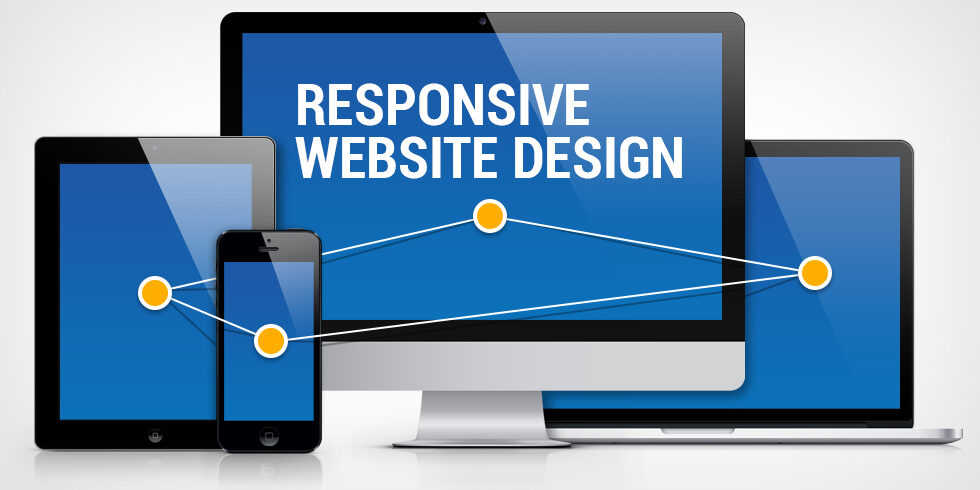What is a responsive site?
Rigorously talking, responsive sites have three characterizing highlights:
1. Media questions
“A media question permits us to target certain gadget classes as well as to really examine the actual qualities of the gadget delivering our work,” Marcotte clarifies.
Media inquiries hence permit engineers to utilize condition checks to adjust website compositions dependent on the properties of the client’s gadget. This is better than basically characterizing breakpoints in the HTML/CSS, as it’s a more custom fitted experience for the client.
2. Liquid frameworks
At the point when adaptable frameworks are made utilizing CSS, the sections consequently adjust themselves to fit the size of the screen or program window, regardless of whether the client is on a 21-inch PC, a 13-inch PC, a 9.7-inch tablet, or a 5.5-inch cell phone.
This empowers originators to keep a reliable look and feel across numerous gadgets. In addition, it sets aside everybody time and cash by permitting architects to refresh one rendition of the site versus many.
3. Adaptable visuals
Marcotte alludes here to utilizing code that forestalls rich media documents from surpassing the elements of their holders, just as viewports. As the “adaptable compartment resizes itself,” he clarifies, so does the visual inside it.
Considering that there are over 8.48B one of a kind gadgets in presence today, this usefulness permit groups to make immortal plans equipped for adjusting to any gadget, paying little mind to its size or shape.
Together, these three sorts of usefulness permit originators to make responsive sites.
Beneath, we’ve included top models that go past the basic rules for responsive website composition. Every site offers an encounter that is customized to the client’s one of a kind setting.
Responsive website architecture models
1. Dropbox
Dropbox has worked really hard of utilizing a liquid matrix and adaptable visuals to plan a champion responsive site. Not exclusively does the textual style shading change to oblige the foundation shading when moving from work area to handheld gadgets, however the picture changes direction too.
Representing setting, Dropbox offers a customized insight across every gadget. For instance, with an end goal to keep clients from bobbing, a little bolt guides work area clients to look down to see more substance. A similar bolt is missing from handheld gadgets, since it’s accepted that clients will normally look on a gadget with touchscreen capacities. Essentially, their information exchange structure is noticeable on work area gadgets, yet it’s taken cover behind a source of inspiration button on tablets and cell phones, where space is restricted.
2. Dribbble
Dribbble’s site highlights one of the signs of responsive website architecture: an adaptable framework, and it gathers from five segments on work area and PCs two segments on tablets and cell phones.
To keep their site from feeling jumbled on cell phones, Dribbble has taken out a few things. For instance, shots are at this point not credited to their producer and the view, remark, and like tallies are presently not settled underneath every thing. They’ve likewise stowed away the menu behind a cheeseburger symbol and eliminated the hunt bar.
3. GitHub
GitHub’s site offers a steady encounter across each gadget. In any case, there were a couple of recognizable contrasts:
When moving from work area to tablet gadgets, the region toward the top changes from a two-segment format to a solitary section design, with the duplicate over the information exchange structure rather than alongside it.
Dissimilar to on work area and tablet gadgets, where their information exchange structure is a focal center, GitHub presents just a source of inspiration button on versatile. Clients should tap the source of inspiration to surface the structure.
Like Dribbble, GitHub has additionally eliminated the hunt bar and secret the menu behind a cheeseburger symbol on handheld gadgets. This is a lovely normal practice, as it lessens mess on cell phones, where space is restricted.
4. Klientboost
This is one more phenomenal illustration of versatile responsive website architecture. Their site stacks astoundingly quick at four seconds utilizing 3G associations. All the more critically, the look and feel of Klientboost’s site stays predictable across all gadgets, yet they’ve figured out how to tailor their client experience to every gadget.
While the full menu, including a “Get Proposal” inspire catch and “We’re employing!” callout, is visible from work area and PCs, and cell phones uncover dense renditions of the menu. Clients visiting their site from tablet gadgets are shown a burger menu symbol and callout, while those meeting from cell phones are shown the menu symbol and source of inspiration button.
5. Wizardry Leap
Wizardry Leap has planned a basic, portable first site with parallax looking over that rejuvenates their dazzling outlines. Considering that cell phones and tablets are presently liable for 56.74% of worldwide web utilization, their methodology bodes well.
Wizardry Leap’s client experience is predictable across all gadgets, with one exemption: the microcopy that guides clients to scroll, which is remembered for PCs and tablets, however prohibited from cell phones, where it’s regular for clients to scroll.
Indeed, even with a 3G association, their site loads in seven seconds—well underneath the worldwide normal of 22 seconds. For a site highlighting responsive movement, that is not very pitiful.
6. Shopify
Shopify’s client experience is steady across all gadgets. Just the source of inspiration catch and delineations changed between work area to cell phones.
On PCs and tablets, the source of inspiration button is to one side of the structure field. On cell phones, it’s underneath.
Likewise, the delineations are to one side of the duplicate on PCs and tablets, though they’re set underneath the duplicate on cell phones.
Like most sites, Shopify’s menu is additionally supplanted by a cheeseburger symbol on handheld gadgets.
Notwithstanding utilizing picture merry go rounds to flaunt their clients, they’ve figured out how to keep their page load speed under five seconds, which is quite great.
7. Crushing Magazine
Crushing Magazine exceeds everyone’s expectations, offering a customized insight across each gadget. Their site includes a two-segment format, full menu, and mix mark on work area, which converts to a one-section design and consolidated menu with lettermark on tablets and cell phones.
Crushing Magazine’s site is likewise a brilliant illustration of comprehensive plan. The menu displayed to work area clients highlights the two marks and symbols. Also, I love the delightful way, rather than utilizing an all around common menu symbol, they’ve selected a source of inspiration button with “menu” and an inquiry symbol. Advanced locals have no issue exploring sites from handheld gadgets, however different ages don’t really have a clue what cheeseburger symbols address.
Their site additionally stacks in only 2 seconds on gadgets with 3G web, which GSMA says will make up 70% of versatile associations through 2020. This keeps their skip rate low and keeps clients from getting disappointed.
8. Slack
Slack’s image is known for being basic and human. It’s nothing unexpected that their site follows similar rules.
Their adaptable network effectively adjusts to viewports of all sizes and shapes. For instance, while client logos are introduced in a three-section design on work area and PCs, displayed in a solitary segment format on handheld gadgets.
Slack’s site is likewise intended to be not difficult to utilize. For instance, their source of inspiration catches range the whole segment on tablets and cell phones, which assists clients with trying not to tap the “Sign in” hyperlink underneath.
9. Treehouse
Treehouse offers a consistent encounter across all stages. Their menu gets dynamically more modest across gadgets—work area and PCs a four-thing menu, tablets highlight a two-thing menu and burger symbol, and cell phones offer a one-thing menu and symbol.
Their structure fields experience a similar change. They’re introduced in two segments on work area and PCs one segment on tablets and cell phones.
10. WillowTree
Like different organizations, WillowTree remembers a full menu for work area gadgets and a dense menu on handheld gadgets. Yet, in contrast to other people, they’ve presented a static route bar at the highest point of the page, which makes a more wonderful encounter for clients with handheld gadgets. They’ve additionally added a text-put together source of inspiration with respect to the versatile variant of their site for added accommodation.
Like other responsive sites, the lattice they’ve developed to introduce client logos is amazingly adaptable. It implodes from five sections on personal computers to four segments on tablets to two segments on cell phones.
Like Treehouse, the region around the top proselytes from two segments on work area to one section on versatile, with the source of inspiration button moving from alongside the duplicate to underneath it.








